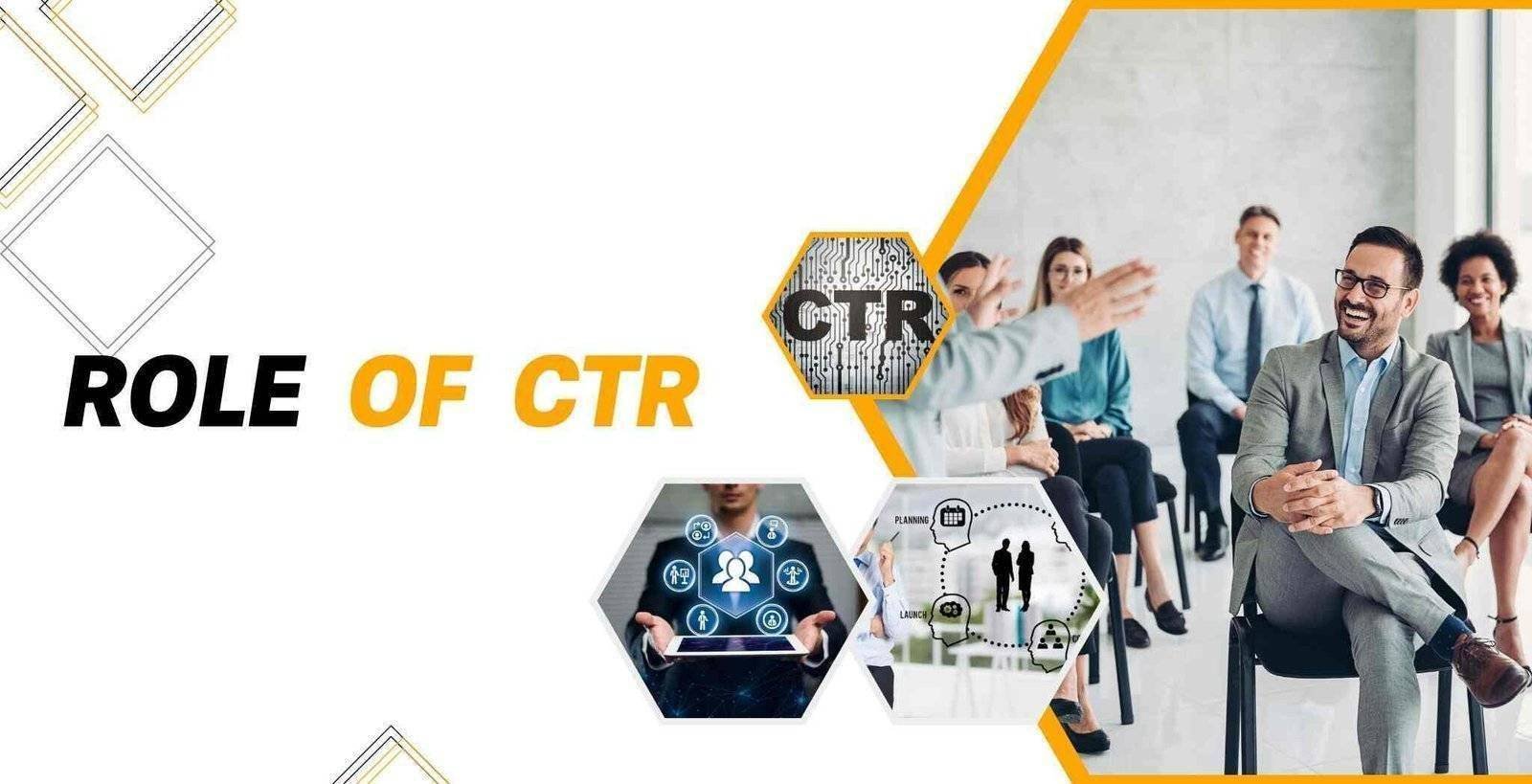The Role of Click-Through Rate: How CTR Shapes Your Website’s Search Engine Ranking
In the ever-evolving online marketing landscape, the importance of Click-Through Rate (CTR) in Search Engine Optimization (SEO) cannot be overstated.
This metric reflects the effectiveness of your online content and plays a crucial role in determining your website’s search engine ranking. Let’s delve into the intricacies of CTR, its calculation, and its impact on various digital platforms.
Understanding Click-Through Rate (CTR)

This metric represents the frequency with which viewers of your advertisement or search results proceed to click on them. Its significance lies in offering a deeper understanding of your content’s relevance and attractiveness to your intended audience.
The Role of CTR in SEO: When your webpage achieves a high CTR, it suggests that the content is effectively meeting the needs and interests of users in response to their search queries. Search engines, including Google, view a robust CTR as an indicator of the pertinence and value of your content, which can favorably impact the ranking of your site
Why Is Click-Through Rate Important?

Click-through rate (CTR) is a very important metric in digital marketing and online content strategy for several reasons:
1. Measures Engagement and Relevance
CTR directly indicates how relevant and appealing your content, ad, or email is to your target audience. A higher CTR means your message resonates with the audience, suggesting that your content is engaging and meets their needs or interests.
2. Influences SEO Rankings
A strong Click-Through Rate may suggest to search engines the value and relevance of your content in response to a user’s search. Although not a primary ranking component in many search engine algorithms, CTR can indirectly affect SEO. The purpose of search engines is to offer the most pertinent findings, so a higher frequency of clicks on your link could be viewed as an indication of its relevance and high-quality
3. Improves Ad Performance
For paid advertising, CTR is a key metric to assess the effectiveness of ads. A high CTR in ad campaigns suggests that the ad copy, imagery, and overall messaging are compelling and well-targeted. This not only improves the current campaign’s success but can also lead to lower costs per click and better ad placements in the future.
4. Facilitates Better ROI Analysis
By understanding your CTR, you can more accurately determine your marketing efforts’ return on investment (ROI). A high CTR combined with a strong conversion rate often leads to a higher ROI, allowing for more efficient use of marketing budgets.
5. Guides Content and Marketing Strategy
Analyzing CTR data helps identify what types of content, topics, and headlines most effectively attract your target audience. These analyses enable you to refine your content strategy, aligning it closely with your audience’s preferences and behaviors.
6. Enhances User Experience
Working to improve CTR often involves optimizing user experience. Whether it’s improving website navigation, creating more engaging ad copy, or designing more intuitive email layouts, these changes increase CTR and overall user satisfaction.
What is a Good Click-Through Rate?

- Varies by Context: A “good” CTR varies depending on the context, such as the industry, type of content, and platform. For instance, an excellent CTR for one industry might be average in another.
- Benchmarking: It’s important to benchmark your CTR against industry averages and adjust your strategies accordingly.
1. Click-Through Rate Formula
- How to Calculate: The formula for calculating CTR is relatively straightforward:
- CTR=(Number of Clicks Number of Impressions)×100%
2. How to Calculate Click-Through Rate
- Step-by-Step Calculation: To calculate CTR, you need two pieces of information – the number of clicks your content receives and the number of times it’s shown (impressions). Divide the number of clicks by the number of impressions and multiply by 100 to get the percentage.
3. YouTube and Email CTR Benchmarks
- YouTube: For YouTube, a good CTR varies widely depending on factors like video content, thumbnail quality, and target audience. However, a CTR between 2-10% is generally considered decent.
- Email Campaigns: The average CTR for email marketing campaigns varies, but generally, rates around 2-5% are considered good. Factors like email content, subject lines, and the targeted audience can influence this rate.
Strategies to Improve CTR
1. Optimize Titles and Meta Descriptions
- What it means: Your title and meta description are often the first things a user sees in search results. These elements should be engaging and informative, offering a clear and accurate preview of the content.
- How it improves CTR: A well-crafted title and meta description can make your content stand out in search results, enticing users to click through to your site. They should be compelling enough to grab attention and relevant enough to meet the searcher’s expectations.
2. Use High-Quality Images
- What it means: For platforms like YouTube or any visual media, the quality of your images or thumbnails is crucial. They should be high-resolution, attention-grabbing, and relevant to the content.
- How it improves CTR: An attractive, clear image can significantly increase the likelihood of a user clicking on your video or ad. On YouTube, for instance, thumbnails serve as a visual summary of your content; compelling thumbnails can lead to higher CTRs.
3. Segment Your Audience
- What it means: Audience segmentation involves dividing your target audience into smaller, more specific groups based on certain criteria like demographics, interests, or behavior.
- How it improves CTR: By segmenting your audience, including through the expertise of a digital marketing agency, Virginia Beach businesses can tailor their content, ads, titles, and images to be more relevant to each group. Personalized content is more likely to resonate with users, leading to higher engagement and CTR.
For instance, a promotional email optimized for a specific age group or interest, with the guidance of a digital marketing agency in Virginia Beach, will likely be more effective than a general one.
4. Test and Refine: A/B Testing
- What it means: A/B testing, or split testing, involves comparing two versions of a webpage, email, or ad to see which performs better. You change one element, like the title, image, or call to action, while keeping everything else consistent.
- How it improves CTR: Through A/B testing, you can empirically determine what elements of your content most effectively encourage clicks. This method allows for data-driven decisions, helping refine your strategy to maximize CTR. For instance, test two email subject lines to see which leads to more opens and clicks.
How to Improve CTR for Search Ads

Improving the Click-Through Rate (CTR) for search ads is crucial for the success of your online advertising campaigns. A higher CTR indicates that your ads are relevant and appealing to your target audience, leading to more traffic and potentially higher conversions. Here are some effective strategies to boost your CTR for search ads:
1. Optimize Ad Copy
- Compelling Headlines: Create eye-catching and relevant headlines. Use action words and address the user’s intent.
- Clear and Concise Descriptions: Ensure that your ad copy is straightforward and highlights the unique value proposition of your product or service.
2. Use Relevant Keywords
- Targeted Keywords: Incorporate highly relevant keywords to the user’s search intent. Using long-tail keywords can often yield more targeted traffic and higher CTR.
- Keyword Placement: Place your main keywords in the ad headline and description to make your ad more relevant to the search query.
3. Leverage Ad Extensions
- Sitelink Add-ons: Incorporate links directing to various pages of your site, giving users a wider range of choices and details.
- Promotional Extensions: Embed extra text that describes unique features, special deals, or key attributes of your offerings.
- Detailed Highlights: Emphasize particular features or elements of your products and services to draw attention to them.
4. Optimize for Mobile
- Mobile-Friendly Design: Ensure that your ads and the landing page they link to are optimized for mobile devices.
- Concise Messaging: Mobile users prefer quick, accessible information, so keep your mobile ad copy brief and to the point.
5. Test Different Ad Variations (A/B Testing)
- Experiment with Variations: Test different versions of your ads to see which ones perform better in terms of CTR.
- Analyze and Adjust: Use the data from these tests to refine your ad copy, keywords, and extensions.
6. Refine Targeting Options
- Geographic Targeting: Tailor your ads based on the user’s location.
- Demographic Targeting: Use demographic information to make your ads more relevant to specific groups.
7. Use Negative Keywords
- Filter Out Irrelevant Traffic: Implement negative keywords to avoid your ads from appearing in unrelated searches, improving traffic quality and CTR.
8. Monitor and Adjust Bids
- Competitive Bidding: Adjust your bids to compete effectively for high-performing keywords.
- Bid Adjustments: Use bid adjustments for different devices, locations, and times of day to optimize your ad spend.
9. Focus on Ad Relevance
- Relevance to Search Query: Ensure your ad addresses the search query and offers a solution or answer to the user’s needs.
- Relevance to Landing Page: Ensure that the landing page linked from your ad is relevant, informative, and aligned with the promise made in the ad.
By applying these strategies, you can significantly improve the CTR of your search ads. Remember, the key to a victorious ad campaign is high CTR and ensuring that the traffic driven by the clicks leads to meaningful engagement and conversions. Regular monitoring and continuous optimization are essential to maintain and improve the effectiveness of your search ads over time.
Conclusion
Click-through rate is vital in understanding how effectively your content engages with its intended audience and influences your SEO ranking. Monitoring and optimizing for CTR can improve your website’s visibility, drive more traffic, and achieve better search engine rankings. Whether it’s your website, YouTube channel, or email campaigns, understanding and improving your CTR can significantly benefit your digital marketing efforts.

